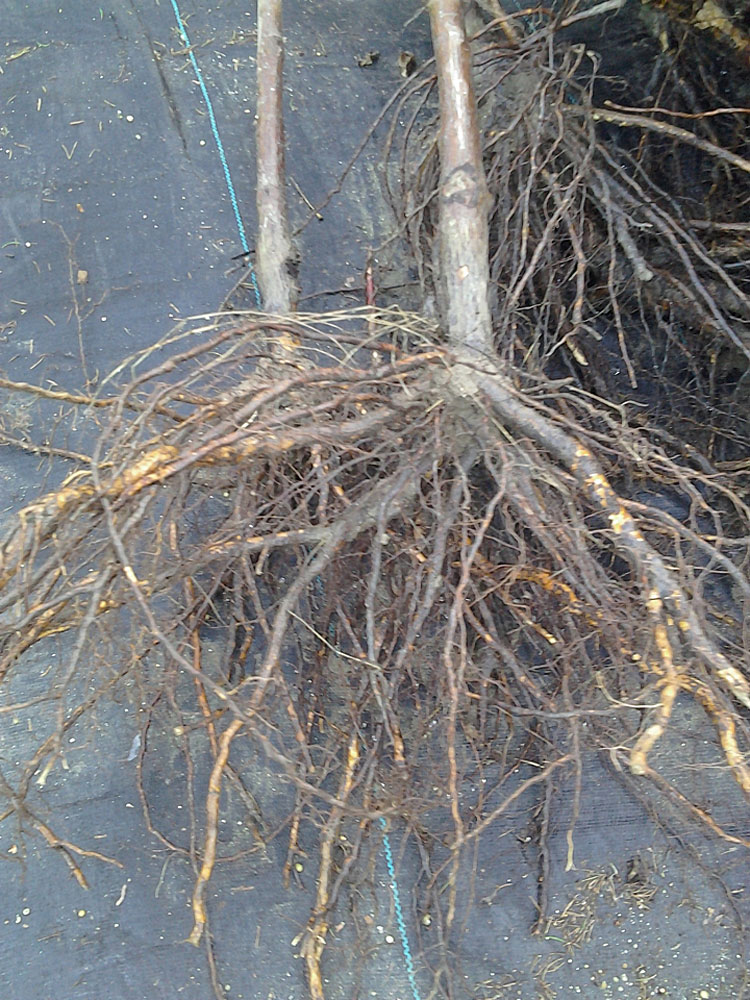By Tony Tomeo

Bare root plants have no incentive to stay confined. They get planted while dormant, and wake up surrounded only by their new soil, with nothing else to get in the way. Canned plants might have been circling their roots within a limited volume of media for a while, trying to find a way out. Once they get in the ground, they may not like what they find there, and try to stay close to the familiar.
Bare root plants should not get too much of a good thing. They need only minimal soil amendment. They might like a bit of organic matter to retain moisture and to keep the soil loose while they get oriented to their new home. A bit of fertilizer would be nice too. Yet, new bare root plants should not get so much amendment that they do not want to disperse their roots beyond the planting hole.
Planting holes do not need to be very big at all. They should be wider than the roots can be spread, but not deeper. Loosing the soil and adding amendments below will cause new plants to sink. Graft unions of grafted plants must remain above grade. Plants with big roots, like fruit trees and roses, prefer their roots to be spread out over a cone of soil in the center of their planting hole.
Most bare root fruit trees are sold with more branches than they need, so should be pruned after planting. Some might get pruned by half. The superfluous stems are there both to cushion the trees in transport, and also to allow more choices for pruning. Some of us want to prune down to lower branches, while others want to prune up to slightly higher branches. Berry canes need very small planting holes, and get pruned back to only two or three buds above ground.
‘Silver Falls’ dichondra
Silver Falls dichondra, Dichondra argentea ‘Silver Falls’, has the same tiny rounded leaves, dense growth and fine texture as old fashioned dichondra lawns, but instead of rich deep green, it is strikingly silvery gray. It does not tolerate traffic well enough to work as lawn, but is a distinctive small-scale groundcover, and cascades exquisitely from urns of mixed perennials or hanging pots.
The trailing growth spreads indefinitely over the surface of the soil, but is not very fast about it. As groundcover, individual plants should therefore be planted only two or three feet apart. They get two to four inches deep. Hanging growth (that can not root into the soil) can cascade more than three feet downward. Silver Falls dichondra prefers regular watering and full sun or a bit of shade.
•••
Horticulturist Tony Tomeo can be contacted at tonytomeo.wordpress.com.